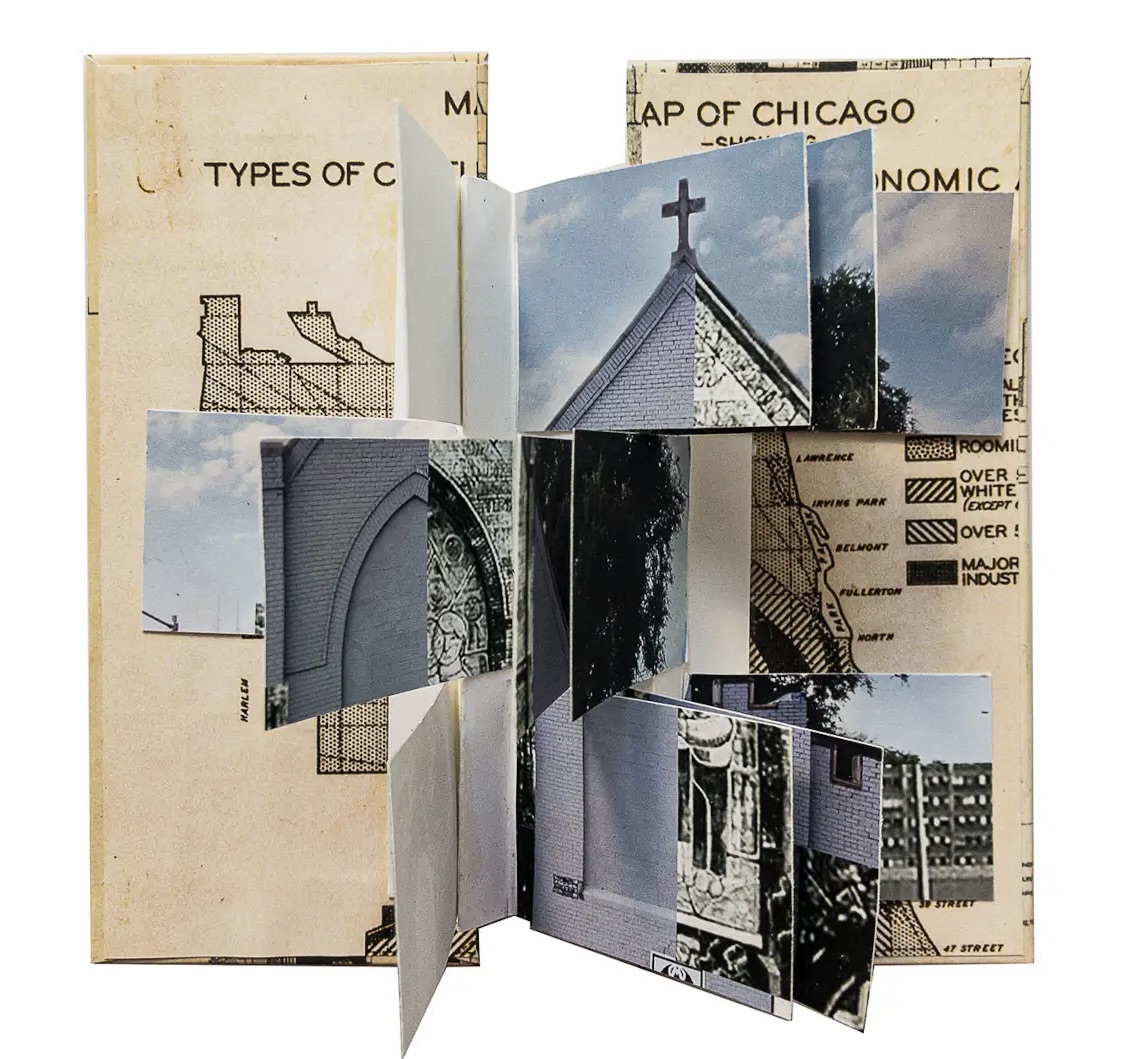

Myth of the Organic City presents an historical and contemporary overview of Chicago’s design and land use, from its Indigenous roots through 20th century infrastructure projects to present-day developments. The exhibition includes maps, landscape designs, installations, wall drawings, sculptures, and multimedia works by more than 25 artists.
The exhibition features artwork by Alexandra Antoine, Rebecca Beachy with Nina Barnett and Christine Wallers, Deborah Boardman, Jennifer Buyck, Julie Carpenter with Jane Norling, Eugenia Cheng, Carl Fudner and Shane DuBay, Jane Georges, Iker Gil, Brian Holmes and Jeremy Bolen, Candace Hunter, Matthew Kaplan, Jenny Kendler and Giovanni Aloi, Nance Klehm, Haerim Lee, JeeYeun Lee, Jin Lee, Nathan Lewis, Norman W. Long, Luftwerk, Jenny McBride, Meida Teresa McNeal, Sherwin Ovid, Viet Phan, Melissa Potter, Emilio Rojas, Pierre-Alexandre Savriacouty, Tria Smith and Katrin Schnabl, Deborah Stratman, Stephen Lowell Swanberg, Jan Tichy, Aleksandra Walaszek, Rhonda Wheatley, Amanda Williams, JI Yang, Sangwoo Yoo, and others.
Myth of the Organic City draws from Chicago’s seal which proclaims “Urbs In Horto” or “City in a Garden” as a projection of environmental custodianship. However, Chicago has been designed and constructed in often inequitable and unsustainable ways, with cycles of dispossession and dislocation of nature and people. The exhibition pairs a broad historical overview with contemporary artworks that reimagine our complicated relationship with the City and nature.
The exhibition’s first floor – Land Usage: From Sediment to Settlement to Steel – presents a historical overview of pre-settlement Indigenous land use to contemporary land usage. Works in the basement show historic changes throughout the city. The staircase highlights transportation, and its accompanying pollution. The second floor – Waterways and Land Mess – visualizes changes in Chicago, from reversing the Chicago River, to disparities of pollution and accumulated detritus. The third floor – Regeneration – offers hope through individuals and groups developing strategies of reuse and regeneration. While the exhibition cannot offer a silver bullet for our looming climate crisis, it points to an arc from negative to positive change.
The exhibition is open Saturdays and Sundays from 1:00 – 5:00 pm.